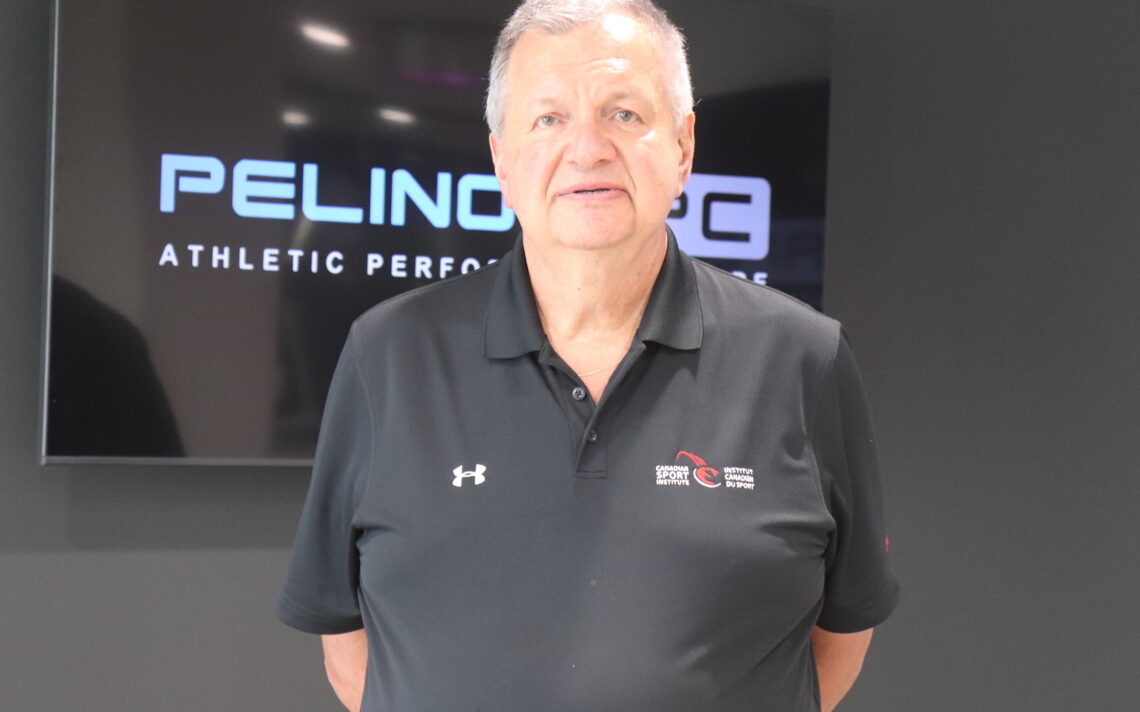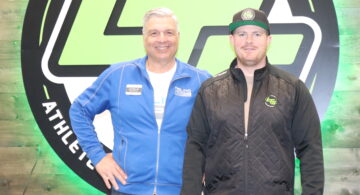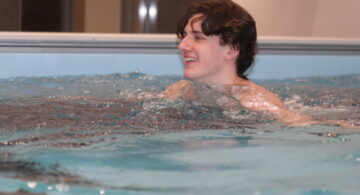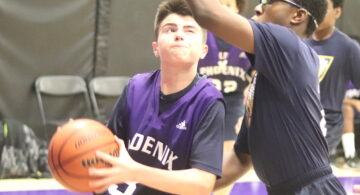
Gorman joins Pelino centre
Given his jaw dropping resume, Dr. Peter Gorman has his choice of where, when and who he works with across the globe.
It’s no wonder the Pelino Athletic Performance Centre is thrilled to announce Gorman has joined the centre as senior advisor for cognitive training, athletic movement and performance development.
Gorman, who is known as the father of heart-rate monitors and has seven patents in the field, has a resume that includes: 43 years of clinical practice as a chiropractor; inventing heart-rate monitor technology used by most treadmills and stair master machines; a client list that includes Olympians, Olympic centres, military, special forces, NCAA schools, and MLB, NHL and NFL players and organizations; and, serving as an advisor to Sport Performance for BRAINHQ, considered by many to already be the gold standard in cognitive training.
“Dr. Gorman helped to combine and to integrate the cognitive training curriculum of BrainHQ into a reactive light movement system to advance think and move training strategies, so that true agility could be efficiently and effectively trained. Every moment of every play of every game requires precise think and move strategies for winning play whether on or off the ice, on the field, court or pitch and the venues where timing counts. Nobody moves randomly. The winners require precise kinematic sequences and decision-based movement — the definition of true agility,” a release from PAPC said. “For this reason, the Pelino team is looking forward to launching The Gordie Howe Institute, whose mandate includes using advanced protocols for ensuring an affective and efficient pathway to optimal performance. With having Dr. Gorman on board, PAPC is positioned to have The Gordie Howe Institute be the gold standard for a total mind and body approach to performance.”
It was an easy choice for Gorman to join the centre.
“Knowing that I can work anywhere doesn’t matter because you have an area where there is a need and you go to the area where there is a need and you try and help as much as you can. If this catches on, maybe coaches will come here, learn some stuff and go out and do more on their own,” he said. “I don’t want anything to help you, I will give you my time, I will give you what little knowledge I have. Hopefully we can do it together and people sharing ideas we can keep on coming up with way of helping the long-term development of the child knowing that everyone is a child whether they are nine or 99.”
The initial discussions with Pelino centred around concussions and coming up with better protocols to treat brain injuries.
“I told Joe that maybe what we could do at your facility is start coming up with a simple test because no injury can happen to the brain without it affecting brain speed. How about baselining everybody that enters a contact sport with a simple test. Is their brain speed nourishing or getting better or is it getting worse? Joe was very accepting of that.”
Gorman’s role at the centre will involve much more than concussions.
“The whole idea of sport is that people move so let’s not get tied down with strength and conditioning. The most important muscle in your body is your brain and our cognitive platform was devised by my partner who is a Nobel Prize winner in neuroscience.”
That platform has been validated by more than 280 scientific papers.
“The whole idea here is a total mind body approach to performance. Train the brain, train the body,” Gorman said. “The body is the machine and the brain is the transmission and if you are going to reach optimum performance you have to try and get both of them working right.”
The goal is to work with youth and older people from weekend warriors to high performance athletes.
“Whether they are nine or 99, they are an athlete.”
The approach will be the same for all.
“All of sport is recognize and react so we want to improve your physicality and reaction but we also want to improve your trigger of recognition. It requires a cognitive approach and a physical approach at all age groups. Not everyone trains to be an Olympic or a pro athlete but everybody can train to be the best that they can possibly be.”
Athletes coming in will be asked their sport of choice they want to excel in and then they will be given a gait analysis.
“I know you need to be able and agile in both directions no favourite side. Let’s see you walk. Your movement is telling us a story. Sometimes it’s just changing to a different shoe and making a different tire for the Ferrari.”
Several more tests are done to determine other variables, including agility, coordination, reaction speeds and how reaction times are affected by distractions.
“How are we going to bring them to optimal performance without training their brains?”
All of the above elements can be measured.
“I don’t believe in anybody but Jesus Christ. Show me the numbers,” Gorman said. “Numbers don’t lie. We put objective evidence on the movements that are required. Now you have great movement but you are still not good at the game because you need skill. That’s where training, coaching and ability come in but we do try to make sure that you are not starting to accumulate a brain injury because at the age of nine you are starting to head the ball up on the soccer court or getting hit just enough into the boards to rattle you every day in practice. We are all in the minor leagues of childhood and somewhere around the age of 18 or 19 we graduate into the major leagues of adulthood. We want to prepare everyone for the major leagues of adulthood.”
The training is an ongoing thing.
“It becomes part of what you do. I am going to train my brain, I am going to train my body, I am going to be good to my mother and I am going to help my teammates. You hope that it is a lifelong process.”
The clinic gives each athlete a plan moving forward.
“We see the asymmetries cognitively, deviant symmetries physically and we come up with a prescription for fitness and we try to guess this is the program,” Gorman said. “We are not so egotistical that we are not flexible. It is a prescription that changes over time.”
The training is for everyone.
“I want everyone I know to have a well-rounded ability with a good healthy body and mind to go out there and be the best they can be. We happen to use a little bit of sport to train the person because the ultimate game is the game of life.”


























